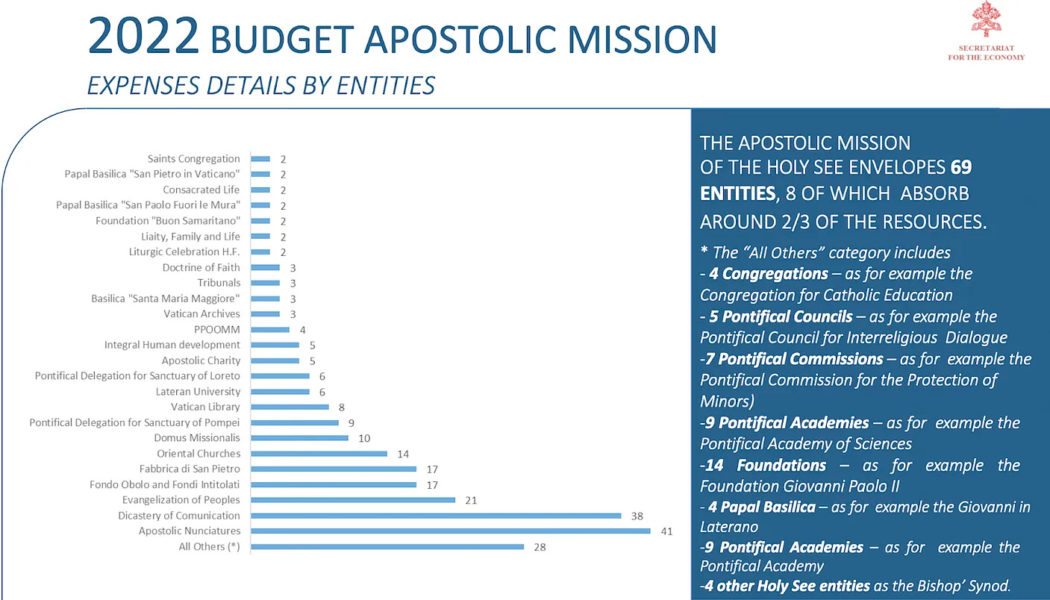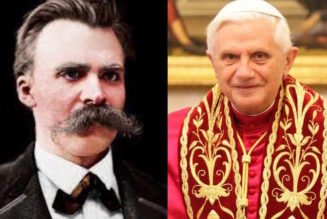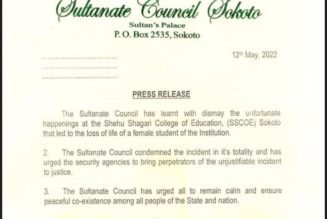Happy Friday friends,
I hope your Lent is off to a flying start.
It’s always a little awkward, I find, trying to strike the right tone of penitential enthusiasm heading into the spiritual desert.
I’m acutely aware I’m not impressing God in the slightest with my modest seasonal disciplines, nor could I, no matter what prayers and penances I were to adopt. I try very hard to recall that these 40 days are something God is giving me, not the other way around.
I am, as JD would tell you if he was being honest, a difficult guy to get along with on a day-to-day basis. I can be, I know, a little spiky, and I have a rather inflated sense of self and purpose which can make me a bit awkward to work with. And I’m worse around the house, I can assure you.
But Lent comes to remind me that it’s the devil who trades in the illusory temptations of material security, personal vindication, and worldly success. These are the things I need to reject, not in hopes of a high-five from God, but for my own happiness, which is always better sought in the stillness and quiet of prayer.
Knowing my own disposition to Pelagian attempts at futile self-justification, I really try to approach Lent as a season of simplicity, rather than “sacrifice.” The things I give up, I hope, merit no special credit of themselves, but will help clear the space I ought to be making anyway for more daily prayer.
It’s my ambition, as it always is this time of year, to spend at least as many minutes (hours?) in silent prayer each day as I would otherwise spend devouring my favorite watch magazines.
It seems like a petty, almost childish, ambition when I say it out loud. But if there is one truth Lent can make clear to me it is the childish and petty nature of the little idols I choose to venerate every day.
The great consolation is that Christ is waiting for me in the desert, and already beckoning me towards the great feast of Easter. There is no time to lose.
Here’s the news.
The News
The Archbishop of Milan is attending today a seminar put on by the Grand Orient of Italy — that’s the Freemasons.
According to the Grand Orient, the confederating and governing body of masonic lodges in Italy, the “historic” seminar will address the “complex” relationship between masonry and Catholicism within the theme of “Freemasonry between Ratzinger and Bergoglio.”
I have something of an abiding interest in the “complex” relationship between the Church and the Masons, so I am somewhat envious of the event — I would sincerely like to be there and hear what’s said. I’m certainly going to be looking for any accounts of the proceedings I can find.
—
Pope Francis accepted the resignation Wednesday of a 51-year-old French auxiliary bishop.
Whatever the bishop’s health circumstances may be, it is hard to ignore the context of his sudden premature departure from office — which follows several allegations and investigations into his handling of complaints of abusive behavior in the Paris Foreign Missions Society, of which he was superior general for several years.
Reithinger’s resignation also follows years of turmoil in the Strasbourg archdiocese. Last year, Pope Francis “accepted the resignation” of Strasbourg’s 66-year old archbishop amid questions of his governance. The year before that, the previous (retired) archbishop admitted to “inappropriate behavior” with a “young woman” in the 1980s.
Meanwhile, the archdiocese’s only other auxiliary bishop has been away from ministry for months on health grounds, and isn’t due back until Easter.
So what’s going on over there in Alsace? You can get the whole story here.
—
The long-serving leader of the Polish bishops’ conference, Archbishop Stanisław Gądecki is due to step down from his office as president next month, having served his maximum two consecutive terms.
Whoever succeeds Gądecki, he’ll have to be able to navigate relations with Rome, and with his German colleagues, to say nothing of leading the Church’s engagement with a new, avowedly secularist government. It’ll be a tall order.
So, who’s on the electoral short list? Read all about it.
—
Two California dioceses made a change this week that will see Catholics kneel during Mass after the Agnus Dei — the “Lamb of God” triptych prayed during the Eucharistic liturgy.
At first glance, this might strike you as nothing much in the way of news — as it did me — but it’s actually very interesting.
The expectation in this country is, according to a 2002 USCCB letter, that people will kneel. Like others, the California dioceses deliberately departed from the practice two decades ago, citing a global trend towards standing. Now things are moving in the other direction.
—
The Holy See has been, in its own words, in a financial crisis for some years now. And, as a general trend, things are getting worse.
Back in the early years of the Francis pontificate, the Vatican was running a deficit of about 5-10 million euros a year, which isn’t great. But today it’s more like 50-60 million.
But the single biggest factor is that the Holy See’s patrimony simply doesn’t generate the money it needs to make the Vatican ends meet. Assets are underperforming and investments are poorly managed.
But how bad is the situation, really? And is it really even possible for the Vatican to go bankrupt? I talked to a fair few people who know the Vatican’s financial situation inside out, and they didn’t have good things to say.
“People like to imagine the Vatican is ‘too big to fail,’ especially people in the Vatican,” one friend close to the Secretariat for the Economy told me. “But if the deficit is totally unsustainable, and shuttering whole departments is unthinkable, what is the plan, exactly? I don’t think there is one.”
The bottom line is, there is every reason to fear an actual liquidity crisis for the Holy See in the next few years. But, infuriatingly, the people I talked to put this down to lack of leadership and commitment to serious change, rather than economic inevitability.
You can read the whole thing here.
Indecent money
Since I published that analysis on the Vatican maybe going broke yesterday, I have had a lot of feedback. The drift of much of it has been “Let it all come crashing down, that’ll teach them.”
I can understand why donors, including and especially American donors, might bridle at the idea of making big money contributions to the Vatican’s bottom line these days. I certainly get it that many people feel burned by learning that, after being inspired by years of pictures of smiling children in mission schools, most of their contributions to Peter’s Pence were going to fund the Vatican bureaucracy.
But here’s the thing: whatever you think about the marketing, and whatever the shortcomings, professional or personal, of the guys managing Vatican investments, the people working in the Vatican bureaucratic machine matter — their work matters. Well, mostly.
Quite a lot of people have reasonably asked how the Dicastery for Communications could possibly spend 38 million euros in a year, given the notoriously retro look of the Vatican website and their limited ability to acknowledge, never mind answer, simple enquiries from journalists in a timely manner.
I’ve no idea what they are spending all that money on over there; I don’t have access to the departmental breakdown, though God knows I’d love a look at it.
I don’t think they are necessarily rolling around in piles of cash, like Demi Moore in that ‘90s Robert Redford flick, over at the Dicastery for Communications, but my sense is that they have the budget for it if they wanted to.
But that particular outlier to one side, I think it’s worth noting how modest most of the departmental allocations actually are, given their responsibilities for the doctrinal, disciplinary, evangelical, and liturgical life of the universal Church.
Speaking to all the Vatican officials I did for the analysis, my sense is not that there is a ton of budgetary fat to be cut across most of the curia — and arguably quite a sizable portion of Vatican officials are already seriously overworked and underpaid.
There’s a lot of room for reasonable, even fierce, criticism of the small leadership caste responsible for the decades of asset mismanagement which has left the Holy See with an enormous structural deficit.
But those are not the same people as the officials in the dicasteries for doctrine, clergy, bishops, liturgy and so on pulling long hours for little thanks, less reward, and no recognition.
Those are the people I think of when I make my contribution to the work of the Holy See.
—
And just to show that generously funded comms departments are not an example of uniquely Roman administrative priorities, consider my own diocese of domicile here in Washington, which ranks outside the top 30 of largest U.S. dioceses.
Attending Mass last night, I picked up a flier for the Annual Cardinal’s Appeal here in DC, to which I shall be contributing, of course. The flier listed some illustrations of where the money goes. Here’s one example:
Now, I’m not on TikTok, so I don’t know what an account there costs a diocese, but it seems to me that if a middling sized U.S. diocese needs $1.125 million a year for “social media and other forms of digital outreach,” the Dicastery for the Doctrine of the Faith is delivering insane value for money by comparison with a budget of 3 million euros a year.
—
By the way, The Pillar is also very much in the business of digital communications and the Church — though we don’t have the $1.125 million budget of the Archdiocese of Washington’s comms team, or an annual appeal from a cardinal to help us make payroll.
That said, we like to think we are making a difference in the life of the Church, and that we deliver real value for money in the process. We have to.
We rely totally on our subscribers choosing to pay for our work — and since they are only a small percentage of our readers, we absolutely have to make every penny count.
So, if you appreciate the work we do, please consider subscribing.
Crisis communications
The first rule of crisis communications is: control the narrative.
When you’re facing an embarrassing disclosure, you get the story out first, yourself, frame it your way, and preemptively correct as many of the points of confusion or misinterpretation as you can.
It’s advice I’ve given many times in my life and various careers, and I would be a fool not to take it myself. So, I am aware that some personal information about me may be about to come to light, most probably via this week’s podcast episode, and I would like to make some things clear for the record.
Yes, I do what most people would describe as “yoga.” I’ve been doing it, this time around, for about a week now.
I realize this is a lot to process, and it may startle some of you and upset others. Hear me out.
I spend, on average, about 12 hours a day at my desk. A significant portion of my waking hours not at my desk is spent in a car or a pew. I am no longer, I have grudgingly come to accept, a young man.
Nor have I ever been what people would consider “active” or “sporty,” and it’s reached the point where my joints and tendons have seized up like a piece of farm equipment left under a tarp for a few years at the bottom of a field.
I don’t make a lot of demands on my body, but when activities like “sitting,” “standing,” and “lying down” become uncomfortable, and when my typing fingers start going numb midafternoon, it’s time to do something — preferably something minimal — that will allow me to at least maintain a basic level of pain-free mobility.
I say “pain-free.” Really, for the last several days I have been walking around feeling like I’ve rubbed all my joints with napalm, but it’s the sort of self-righteously pleasant pain that only the truly indolent can appreciate after 25 minutes of moderate stretching.
But I accept many people have some strong, negative associations with the idea of “yoga” — I share all of them — so I would like to dispel some likely misassumptions at this point:
I do not go to a “class.”
For a start, it would be mortifying for me; I would rather shrivel into a sclerotic husk than exhibit myself to such inevitable ridicule. My wife informs me that, even from the privacy of a locked room on the other side of the house, it sounds like I’m being vigorously interviewed by a CIA extraordinary rendition team, as I try to extend a hamstring past 45 degrees.
But even if I were amazing at it, I’d still not fancy a gathering of the type of people who, you know, “do yoga” in this country. The kind of cultural Californians who keep dogs in their handbags, crystals in their houses, and a Meghan Markle podcast in their ears.
I do not, nor have I ever, nor would I ever (unless traveling in actual India), say “namaste.”
There is no gnostic “light” within me, and it certainly doesn’t greet any similarly imagined inner illumination inside the kind of person with a home full of $100 candles marketed as smelling like Gweneth Paltrow’s naughty bits.
In fact, the only time someone has actually attempted to greet me with a “namaste” was a local hippie in Takoma Park, who literally blocked my path as I was juggling several unsecured coffees and tried to sell me on transcendental meditation. I won’t spell out my response, but it also totaled 7 letters.
And the problem with yoga is that it usually comes freighted with a lot of spiritual snake oil. And as a commercial venture it is marketed primarily at people with a gaping void where their spiritual life ought to be, the kind backfilled with expensive affectations like “oat milk.”
Pope Francis has warned about exactly this (more or less) in the past, in fact.
But my own short video, which I watch on repeat on my phone, is run by a former professional wrestler with a track record of helping rehab disabled veterans, so it’s about as un-spiritual as it gets; there’s no Om-ing, and while I’m occasionally told to “pay attention” to something, there’s none of that “mindfulness” claptrap.
I’m not recommending it to anyone, and I’m certainly not handing out any unpaid product endorsements here, I’m just saying you can do a bit of stretching without being baited into an abusive suburban sex cult — though the line outside my local Bikram franchise proves that even when this sort of thing is known, it’s not an absolute deterrent for some people.
The adage is that when you believe in nothing you can fall for anything, and I think the nonsense that surrounds a lot of “big yoga” proves it. It’s part and parcel of why the “healing crystal” industry is predicted to hit $100 million this year and why Ms. Paltrow has made herself rich and revered beyond the wildest dreams of your average Hollywood nepo baby.
It’s why people pay thousands of dollars for someone named Holly Star (that’s the real name of a real person) to “cleanse the energy” of their house via her “unique style [which] creates a space to let your personal truth unfold, to celebrate it, to live it, and give it a voice.”
She told the WSJ last year that she studied for five years with “various gurus, healers and shamans,” and “kind of goes into a trance” as she purges the bad vibes from people’s houses so that she can — and she literally said this — “feel the energetic templating shifting.”
Star also has a shop — sorry, “spiritually inclined luxury home goods boutique” — which she encourages her customers to take a look at. Of course she does.
She also does “weddings” and financial planning, if you prefer to file your tax returns with a bundle of burning white sage.
Now look, it’s easy (and perhaps morally incumbent on us) to ridicule obvious humbugs like Holly Star (again, her real name) and her credulous clients forking out for magic rocks.
But, maybe, we should feel challenged by them.
If there is such a clear and desperate demographic of people out there, setting fire to their time and money in the search of meaning and spiritual support, is the urgency of the evangelization not burningly clear?
If there’s a market for Holly’s crystal healing box (priced only $375!), I would submit there’s a lot of low hanging fruit in the Lord’s vineyard we’re leaving to rot on the spiritual vine. That’s the real communications crisis here.
God grant me the grace to evangelize with the shameless confidence of an urban New Age charlatan.
Now, if you’ll excuse me, my fingers are starting to tingle again, so I’ve got to go.
See you next week,
Ed. Condon
Editor
The Pillar
Comments 3
Services Marketplace – Listings, Bookings & Reviews











